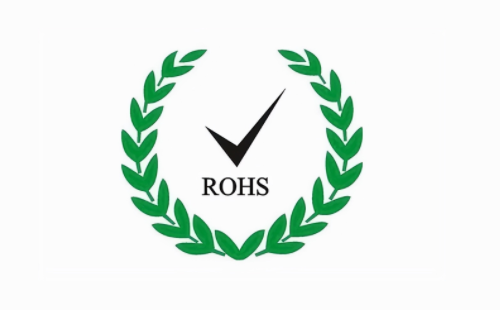Basic knowledge of RoHS what does RoHS mean?
Date:2022-05-27 14:53:00 Views:2916
ROHS test
RoHS is a mandatory standard formulated by EU legislation. Its full name is the directive on restricting the use of certain hazardous components in electronic and electrical equipment.
The ROHS certification standard has been formally implemented on july1,2006. It is mainly used to regulate the material and process standards of electronic and electrical products, so as to avoid harm to human health and help protect the environment.
The purpose of this standard is to eliminate lead, mercury, cadmium, hexavalent chromium, polybrominated biphenyls and polybrominated diphenyl ethers in electrical and electronic products, and make key provisions on the content of cadmium, which shall not exceed 0.01%.

Coverage of RoHS Directive
Products covered by ROHS directive mainly include: household appliances, such as refrigerators, washing machines, microwave ovens, air conditioners, vacuum cleaners, water heaters, etc; Home appliances, such as audio, video products, DVD, CD, TV receiver, it products, digital products, communication products, etc; Electric tools, electric electronic toys, medical electrical equipment; It and telecommunications equipment and consumer goods such as radios, televisions, cameras and sound systems.
The RoHS directive covers not only the complete machine products, but also the parts, raw materials and packaging used in the production of the complete machine, which is related to the whole production chain.
Harm of six toxic substances restricted by RoHS to human body
Lead (PB): lead absorbed into the body, regardless of any form of compound, will cause serious poisoning, affect the development of intelligence and bones, cause indigestion and endocrine disorders, lead to anemia, hypertension and arrhythmia, and damage renal function and immune function. The main symptoms are: anemia, weakness, local abdominal pain, paralysis, numbness in the wrists and ankles, etc.
Mercury (Hg): Mercury is mercury, which can evaporate at room temperature. Inhalation of a little mercury vapor will cause poisoning symptoms. Mercury and its compounds can invade human body through respiratory tract, skin or digestive tract. When Mercury enters the human body, it can damage the internal organs and cause neurotoxicity and deep tissue lesions.
Cadmium (GD): cadmium is extremely toxic. If it is retained in the body, it will cause neurological disorders.
Hexavalent chromium (cr6+): entering the human body in the form of steam or dust will cause perforation of nasal septum. It is highly toxic. Direct contact may cause dermatitis. If the drinking water exceeds 400 times of the standard, it will produce symptoms such as quarrel erosion, diarrhea, indigestion, etc., and in severe cases, it may produce transient shock.
Polybrominated biphenyls (PBB) and polybrominated diphenyl ethers (PBDE) are collectively referred to as 20 suspected carcinogens and potential carcinogens.
How to conduct RoHS inspection?
In fact, ROHS testing is not so mysterious. According to the requirements of RoHS directive, qualified third-party testing institutions in China split the products submitted by customers for inspection and test hazardous substances with different materials. Compare the final test results to see whether the six hazardous substances including lead, cadmium, mercury, hexavalent chromium, polybrominated biphenyls (PBB) and polybrominated diphenyl ethers (PBDE) comply with the requirements of RoHS directive. If they are within the specified requirements, the RoHS compliance report can be obtained.
Generally speaking, four harmful metal elements (lead, cadmium, mercury and hexavalent chromium) shall be tested for metal materials. Besides these four harmful heavy metal elements, polybrominated biphenyls and polybrominated diphenyl ethers shall also be tested for plastic materials. At the same time, the packaging materials of different materials also need to be tested for heavy metals.
RoHS limit requirements and standards
On january6,2016, the Ministry of industry and information technology of the people's Republic of China issued the administrative measures for the restriction of the use of hazardous substances in electrical and electronic products (hereinafter referred to as the administrative measures), known as the national promotion RoHS. The management measures require that all electronic and electrical products within the scope of application must declare the information of hazardous substances, and the products entered into the compliance management catalogue must meet the limit requirements.
Limit standard: gb/t 26572-2011 limit requirements for restricted substances in electronic and electrical products
Test method: gb/t 26125-2011 determination of six restricted substances (lead, mercury, cadmium, hexavalent chromium, polybrominated biphenyls and polybrominated diphenyl ethers) in electronic and electrical products
Necessity of RoHS inspection
ROHS testing can protect people's health and reduce the harm of harmful substances. At the same time, ROHS testing is also an optimization policy. It is good for both consumers and manufacturers. From the perspective of consumers, ROHS testing can prove that their products are safe and environmentally friendly. For manufacturers, this ROHS test report is like their own product advertisement, which means that their products have quality assurance, and the quality of products can be recognized by EU consumers.
With the development of international trends, ROHS detection has become a key factor to measure the quality of electronic and electrical products, and also the embodiment of the competitive advantage of enterprises. Therefore, ROHS detection of electronic and electrical products is of great significance.




 Weixin Service
Weixin Service

 DouYin
DouYin
 KuaiShou
KuaiShou





















